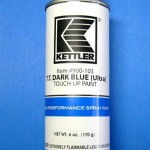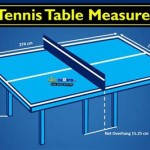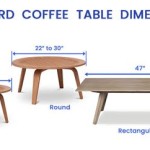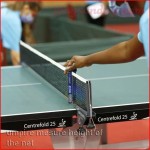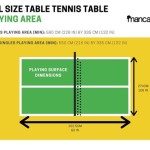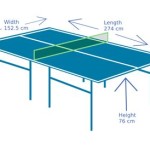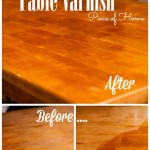Dinner Table Set Up: A Guide to Elegant and Efficient Dining
Setting a dinner table is an art form that combines practicality with aesthetic appeal. It's a way to welcome guests, create a sense of occasion, and elevate the dining experience. Whether hosting a formal dinner party or a casual gathering, a thoughtfully set table conveys thoughtfulness and sets the tone for the meal. This guide will explore the essential elements of dinner table setup, providing insights on proper placement, etiquette, and style.
Essentials for a Well-Set Table
The foundation of a beautiful and functional table setting lies in understanding the placement of essential items. These include:
- Dinner Plate: Positioned in the center of each place setting, the dinner plate serves as the base for the rest of the meal. It's typically the largest plate and remains in place throughout the meal.
- Salad Plate: This smaller plate is placed on top of the dinner plate, typically only used for salad courses. It is removed after the salad is finished.
- Bread and Butter Plate: Positioned to the left of the dinner plate, this smaller plate is used for bread, rolls, and butter. It remains throughout the meal.
- Napkin: Folded neatly and placed to the left of the forks or on top of the dinner plate, the napkin is used for wiping hands and mouth during the meal.
- Fork: The fork is placed to the left of the dinner plate, with the tines facing upward. In a formal setting, multiple forks may be used, with the fork for the main course farthest from the plate and the salad fork closer. The fork for dessert is placed horizontally above the plate.
- Knife: The knife is placed to the right of the dinner plate, with the blade facing the plate. The blade should be closest to the plate, and the handle should point outward. As with forks, multiple knives may be used in a formal setting, with the main course knife closest to the plate and the butter knife placed above the bread and butter plate.
- Spoon: The spoon is placed to the right of the knife, with the bowl facing upward. It is used for soup, dessert, or other courses as needed.
- Glassware: The water glass is placed above the knife, and other glasses are placed to the right, in order of use (wine glass, champagne flute). The space between glasses should be sufficient to allow for easy reach.
Etiquette and Style
Beyond proper placement, table setting etiquette and style play a crucial role in creating an enjoyable dining experience. Here are key considerations:
- Formal vs. Casual: The level of formality dictates the overall style of the setting. Formal settings often use more intricate place settings with multiple pieces of silverware and elegant linens. Casual settings allow for a more relaxed approach, using simpler place settings and less elaborate decorations.
- Centerpiece: A centerpiece draws the eye and adds visual interest to the table. Choose a centerpiece that complements the overall ambiance and doesn't obstruct the view or conversation. Flowers, candles, or decorative objects can be used effectively.
- Linens: Tablecloths and napkins add elegance and protection to the table surface. Choose linens that coordinate with the occasion and the overall color scheme. White linens are classic and versatile, while colorful linens can add a touch of personality.
- Guest Seating: Consider guest preferences and compatibility when arranging seating. It's customary to seat couples together, but it's also important to mix guests from different groups to encourage conversation and interaction.
Tips for a Successful Table Setting
Here are a few practical tips to ensure a flawless dining experience:
- Plan Ahead: Decide on the menu and style of the event in advance to select appropriate tableware and linens. Create a shopping list and ensure you have enough of each item for all guests.
- Practice Placement: Practice setting the table in advance to ensure everything is placed correctly and efficiently. Familiarize yourself with the proper placement of all items to avoid confusion during the meal.
- Choose High-Quality Tableware: Invest in durable and stylish tableware that will last for years. Avoid using chipped or mismatched pieces, as they detract from the overall presentation.
- Pay Attention to Detail: Small details can make a big difference. Choose coordinating napkins and place cards, and consider adding decorative elements like candles or flowers to enhance the ambiance.
- Clean and Polish: Ensure all tableware is clean and polished before setting the table. Dust off and arrange all decorative elements to create a visually appealing display.
Setting a dinner table is more than just arranging plates and cutlery; it's an opportunity to express your personal style and create a welcoming atmosphere for your guests. By following these guidelines and incorporating your own creative touches, you can transform your dining room into an elegant and inviting space for unforgettable meals.

Stunning Yet Basic Dining Table Setting For Your Next Dinner Party

How To Set The Table For Any Occasion Grain Frame
:strip_icc()/Henderson_BFloral_0406copy-5d34fe79d5b945a5a0f08c987d1d1468.jpg?strip=all)
A Top Designer Shares 3 Quick Tricks For Setting Proper Dinner Table

5 Table Settings Every Host Should Know What S For Dinner

Table Settings Guide How To Set A For Diffe Occasions

Table Setting

How To Set A Dining Table Every Day Casual And Formal Dinner Settings La Redoute

How To Set A Table Basic Casual Formal Dinner Setting

Contrasting Vs Monochromatic Dining Table Setting Styles Thinkitchen

4 Ways To Set Up An Inviting Festive Table

